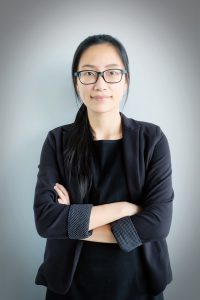
Education
E-mail: warasinee.cha@mail.kmutt.ac.th
Education
- Ph.D. in Neuroscience December 2015
Yale University, New Haven, CT
Area of Specialization: Computational Neuroscience
Department: Interdepartmental Neuroscience Program
Academic Advisor: Xiao-JingWang, Ph.D.
Dissertation: Cortical mechanisms for category-based computation and category learning
- M.Phil. in Neuroscience 2012
Yale University, New Haven, CT
- Summer School: Computational and Cognitive Neuroscience 2010
Cold Spring Harbor Asia, Suzhou, China
- B.A. in Physics and Cognitive Psychology 2005 – 2009
Cornell University, Ithaca, NY
Majors: Physics and Psychology
Minor: Cognitive science
Magna Cum Laude
Professional Experience
- September 2015 – present: Data Scientist at Big Data Experience Center, KMUTT
- February 2016 – October 2016: Lead Data Scientist at Big Data Foundation Project, Ayudhya Capital Services Co. Ltd.
- August 2016 – present: Data Analyst at InsightEra Co. Ltd.
Publications
- Engel TA**, Chaisangmongkon W**, Freedman DJ, Wang XJ (2015) Choice-correlated activity fluctuations underlie learning of neuronal category representations. Nature Communication. (** equal contribution)
- Alireza, S., Chaisangmongkon, W., & Wang, X. (2016). Chapter 13 – Neural Circuit Mechanisms of Value-Based Decision-Making and Reinforcement Learning. In Decision Neuroscience: An Integrative Perspective (1st ed., pp. 163-176). Cambridge, MA: Academic Press.
- Chaisangmongkon W, Swaminathan SK, Freedman DJ, Wang XJ (2016) Robust transience : How the fronto-parietal network performs sequential category-based decisions. (Accepted)
SELECTED CONFERENCE PRESENTATIONS
- Chaisangmongkon W, Swaminathan SK, Freedman DJ, Wang XJ. Dynamic neural population coding of visual categories in the fronto-parietal network. Society for Neuroscience annual meeting, San Diego, CA. November 9-13, 2013. (Poster)
- Chaisangmongkon W, Engel TA, Freedman DJ, Wang XJ. Reward-dependent plasticity model for categorization and category match decision. Society for Neuroscience annual meeting, New Orleans, LA. Oct 13-17, 2012. (Poster)
- Chaisangmongkon W, Swaminathan SK, Freedman DJ, Wang XJ. Direction tuning vs. category tuning in delayed match-to-category task. Computational and Systems Neuroscience (Cosyne) annual meeting, Salt Lake City, UT. February 23-26, 2012. (Poster)
RESEARCH INTERESTS
My primary research interests involve the use of data mining techniques to analyze neurophysiological data and utilizing machine learning algorithms in conjunction with largescale numerical simulations to model cognitive functions of the brain. I aimed to answer a specific neuroscientific question: how a network of neurons in the brain perform complex computations such as categorization, visual recognition, economic judgement and context-dependent decision in a dynamic and flexible manner. To address the question, I have used a multitude of techniques such as statistical machine learning, dimensional reduction and pattern recognition to extract meaningful phenomenological descriptions from multidimensional neurophysiological data, such as electrophysiological recordings, local field potentials, EEG, and fMRI. To shed light on the neural mechanism that gives rise to empirical observations, I developed large-scale parallel neural network simulations and used machine learning techniques, mainly reinforcement learning, deep learning and other forms of optimization methods to identify appropriate parameter sets for the model. My computational study results in a functional model of cognitive processes in the brain that elucidates the generative process by which the empirical results emerge and guides future experimental designs.
RESEARCH EXPERIENCES
Wang Lab 2009 – Present
PI: Xiao-JingWang, Ph.D.
Yale University, New Haven, CT
- Build artificial networks trained by Hessian-Free algorithm to perform cognitive operations such as sequential decision making andworking memory. Manage parallel simulations on large computer clusters. Conduct analyses of large-scale simulation data.
- Build a biophysically realistic neural network simulation to understand the cortical mechanism of high-level cognitions in primates’ frontal and association cortices. Generate mathematical models that explain synaptic plasticity and dynamic behaviors of cortical microcircuits.
- Familiarity with normative and generative models used to understand behavioral and neural data, e.g. generalized linear model, reinforcement learning, dynamical system theory, neural network models, stochastic processes, Bayesian inference, graph theory.
- Conduct extensive statistical analyses of neurophysiological data (single-unit recording and local field potential collected from awake behaving animal brains).
- Proficiency in Matlab, R, and Python
The Memory and Cognition Lab 2009-2010
PI: Marcia K. Johnson, Ph.D.
Yale University, New Haven, CT
- Collect and analyze data from functional magnetic resonance imaging (fMRI).
- Work on cortical surface reconstruction to obtain retinotropic map of human visual cortex from fMRI data.
- Design and implement an experiment to investigate hemodynamic response in frontal eye field during attentional suppression.
The Personality, Attachment, and Control Lab (PAC) 2007-2009
PI: Vivian Zayas, Ph.D.
Cornell University, Ithaca, NY
- Design and conduct psychophysics experiments on human subjects. Collect and analyze data using electroencephalography (EEG).
- Study event-related potentials (ERPs) and lateralized readiness potential (LRPs) to pinpoint the underlying mechanism of automatic activation in premotor cortex that is responsible for unconscious priming phenomenon.
Sleep Lab 2007-2009
PI: Dr. Helene Porte, Ph.D.
Cornell University, Ithaca, NY
- Using EEG to collect brain activity in sleep subjects. Design a software for scoring sleep stages.
Laboratory of Atomic and Solid State Physics 2006-2007
PI: J. C. SÃlamus Davis, Ph.D.
Cornell University, Ithaca, NY
- Detecting the small deviation in non-Newtonian gravitational force in ultra-low temperature environment.
Science and Technology Department 2006-2007
PI: Andreas Heinrich, Ph.D.
IBM Almaden Research Center, San Jose, CA
- Using Scanning Tunneling Microscopy to study the nano structure of Copper Nitride thin-film insulator surface.
TEACHING EXPERIENCES
- Teaching Fellow Program Participant, Yale University. Introduction to the Human Brain, 2012. Course head: Amy Arnsten, Ph.D.
- Teaching Assistant for graduate-level neurobiology course, Yale University. MCDB 720 Neurobiology, 2010. Course head: Haig Keshishian, Ph.D.
- Physics Tutoring at the Learning Skills Center, Cornell University. Training undergraduate research assistants, PAC Lab, Cornell University.
HONORS AND AWARDS
- Royal Thai Scholar, Thaipat Scholarship (2004-2015)
- Magna Cum Laude (2009)
- Dean’s List (2005-2009)
- Honors Research in Psychology, Cornell University (2008)
- Treasurer of Cornell Thai Association (2006-2007)
- Adelphic Award – Honorable Mention (2006)
SKILLS
Programming:
- MATLAB
- Python
- R
- C++
- Java
- JavaScript
- PHP
- Ruby
- Latex
Computational concepts:
- Artificial neural networks
- Deep learning
- Reinforcement learning
- Nonlinear dynamical system
- Convex optimization
- Data mining
Dimensionality reduction
Clustering
Classification
Statistical learning
Generalized linear models
- Stochastic processes
- Probabilistic models
Experiments:
- Multichannel EEG
- EEGLAB
- Eye tracking system
- SPSS
- Psych Toolbox
- SPM



 Legacy of FIBO
Legacy of FIBO

